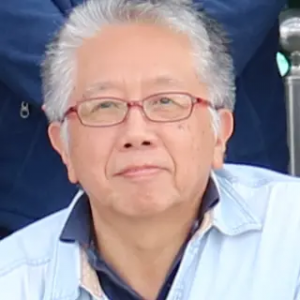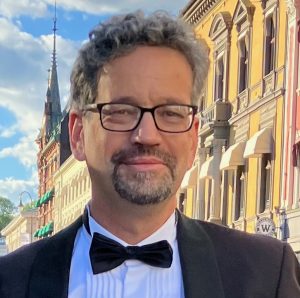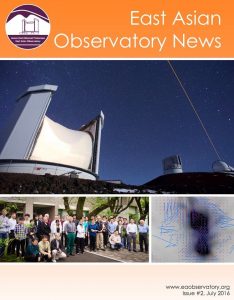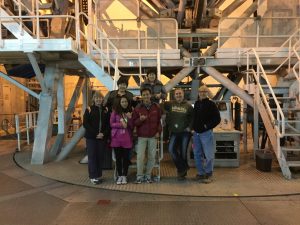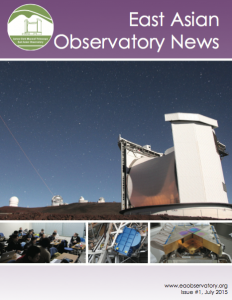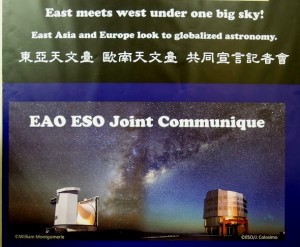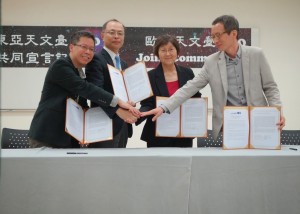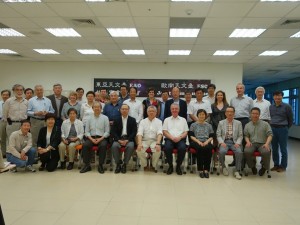Contents
- 0.1 EAO Board of Directors Announces New Governance for EAO and the JCMT
- 0.2 EAO announces the first opportunity for East Asian astronomers to access time at Subaru telescope for the now-open 17A Call for Proposals.
- 0.3 The EAO Newsletter is out now – enjoy!
- 0.4 ASIAA Visitors to JCMT – May 2016
- 0.5 New Horizons for the JCMT with the East Asian Observatory: Latest Science from the JCMT
- 0.6 2015 IAU Splinter Session
- 1 EAO’s First Newsletter is published
- 2 EAO and ESO Sign Joint Communiqué: East meets West under one big sky!
EAO Board of Directors Announces New Governance for EAO and the JCMT
|
|
|
|
Dr. Paul Ho, who founded the EAO and provided the outstanding leadership of the first decade, stepped down as the EAO president and Director on Feb 28, 2025 at the end of his decadal term. He remains as an EAO Distinguished Research Fellow and the Director-Emeritus. EAO is governed by Academia Sinica Institute of Astronomy and Astrophysics (ASIAA, Taiwan) and National Astronomical Research Institute of Thailand (NARIT). The EAO operates JCMT with the support of additional partners from the UK, Ireland, South Korea, Japan, China, and Canada in cooperation with the University of Hawaii.
As of March 1, 2025, Dr. Ming-Tang Chen, a Full Research Fellow of ASIAA in charge of the ASIAA Hawaii operations since 2003, will serve as the Executive Chair of the EAO Board of Directors.
Dr. Geoffrey Bower will serve as EAO President and Director of the JCMT. Dr. Bower has most recently served as Project Scientist for the Event Horizon Telescope Collaboration and Chief Scientist for Hawaii Operations with Academia Sinica Institute of Astronomy and Astrophysics in Hilo, HI. He is also Affiliate Graduate Faculty with UH Manoa Physics and Astronomy. A graduate of Princeton University and UC Berkeley, he has also held research and teaching positions at UC Berkeley, the National Radio Astronomy Observatory, and the Max Planck Institute for Radioastronomy. His interests are in black holes, neutron stars, the dynamic radio sky, radio cosmology, and radio astronomy instrumentation. Dr. Bower is the author of more than 230 publications. These publications include the first detections of intrinsic structure and polarized emission in the Galactic Center black hole, the first image of a black hole, and the first detection of an extragalactic counterpart to a fast radio burst. Dr. Bower has been awarded the Breakthrough Prize for Fundamental Physics, the Einstein Medal, and numerous other awards.
EAO announces the first opportunity for East Asian astronomers to access time at Subaru telescope for the now-open 17A Call for Proposals.
For details please visit: EAO proposal process for the Subaru 17A Call
The EAO Newsletter is out now – enjoy!
For the latest newsletter and for copies of our past newsletters please visit: http://www.eaobservatory.org/jcmt/public/newsletter/
ASIAA Visitors to JCMT – May 2016
JCMT was pleased to host visitors from ASIAA, Taiwan recently. Back row (Left to Right): Winny Hsieh, ASIAA Chief Administrator, You-Hua Chu, ASIAA and EAO Director; Front row (Left to Right) Wendy Light, EAO/JCMT Chief Administrator, Cherry Chiu and Sean Liao, ASIAA accounting staff, Jessica Dempsey EAO/JCMT Deputy Director and Ming-Tang Chen, ASIAA Deputy Director for Hawaii Operations/JCMT Board member
New Horizons for the JCMT with the East Asian Observatory: Latest Science from the JCMT
2015 IAU Splinter Session
August 6th 6pm-8pm
Room 312 Hawaii Convention Center
The East Asian Observatory has forged a new path for the JCMT following the successful transfer of operation to EAO in March 2015. Operations immediately resumed with an EAO Pilot Science semester initiated in late March, taking successful science with JCMT’s signature instruments, and recommencing commissioning of the additional instrument elements (Pol-2 and FTS-2) for SCUBA-2. In this special session, we will present the latest results from the JCMT Legacy Surveys, completed in early 2015. We will also show some of the recent results from Pilot Science, and discuss the plans EAO and its partners have for continuing to keep the JCMT at the cutting edge of sub-millimetre science.
Program and speakers can be viewed here
EAO’s First Newsletter is published
Full newsletter can be read here
EAO and ESO Sign Joint Communiqué: East meets West under one big sky!
On May 5, 2015, the East Asian Observatory (EAO) announced its Joint Communique with the world’s largest astronomical organization, the European Southern Observatory (ESO) in a meeting hosted by Academia Sinica Institute of Astronomy and Astrophysics (ASIAA) in Taipei, Taiwan. The convention was attended by Dr. Tim de Zeeuw, the ESO Director General, and top members of the EAO from several countries. Delegates discussed the details of cooperation between the two observatories and shared their visions for the future. Aspiring to be the counterpart to ESO in Asia, Dr. Paul Ho the Director General of the EAO said that East Asia and Europe are looking forward to more global collaboration in the future.
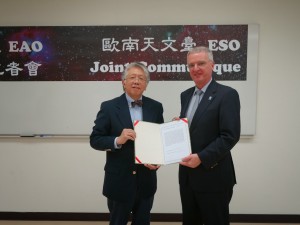
EAO Director General Dr. Paul Ho and ESO Director General Dr. Tim de Zeeuw signed a Joint Communiqué
Several leading astronomers from the East Asian region attended the Taipei meeting including, in addition to Dr. Zeeuw, ESO Director General, and Dr. Paul Ho, Academician and Distinguished Research Fellow of Academia Sinica, the Director General of the EAO; National Astronomical Observatory of Japan (NAOJ) Director General, Dr. Masahiko Hayashi; Korean Astronomical Society President Dr. Young Chol Minh representing Korea Astronomy and Space Science Institute (KASI); International Astronomical Union (IAU) President, Dr. Norio Kaifu; and Director of the Kavli Institute of Astronomy and Astrophysics at Peking University (KIAA-PKU), Dr. Luis Ho.
In 2005, ASIAA, KASI, NAOC, and the NAOJ formed the East Asian Core Observatories Association (EACOA) to promote collaboration and cooperation, and share regional resources and manpower. This in turn led to the formation of the East Asian Observatory (EAO) with Dr. Ho being elected as the first EAO Director General. EAO’s first astronomy operation started on 1 March 2015 with the James Clerk Maxwell Telescope based on Mauna Kea in Hawaii.
Dr. Tim de Zeeuw commented: “The recent growth in astronomy in East Asia is remarkable and we at ESO are very impressed by the ambitious future plans presented at this meeting. There are many possible future areas of collaboration with ESO to be investigated.”
The European Southern Observatory (ESO) is the pre-eminent intergovernmental science and technology organization in astronomy. ESO is supported by 16 countries, which represent about 30% of all the astronomers in the world. ESO operates some of the premier astronomical facilities in the world, including the Very Large Telescope which consists of four 8.2m telescopes in Paranal, and the Atacama Large Millimeter/sub-millimeter Array (ALMA) together with North America and East Asia. ESO is also building the 39m European Extremely Large Telescope which will be the largest optical telescope ever built.
Related links
ESO: http://www.eso.org/
ASIAA: http://asiaa.sinica.edu.tw
Media contacts:
outreach@eaobservatory.org




